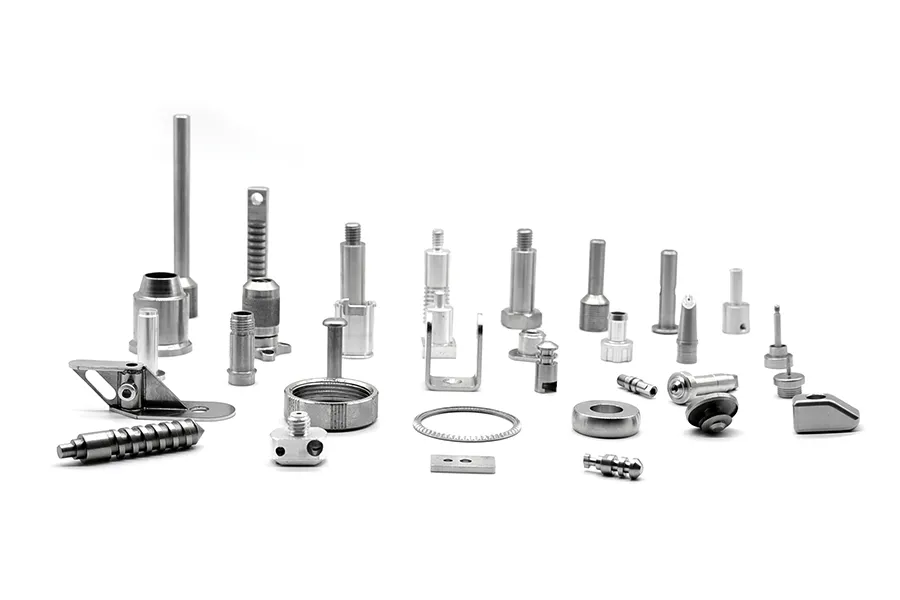So how can we prevent metal corrosion? This article will share you some methods.
Metal materials are now widely used in today’s life and play an important role in the development of our society. Metal materials are not only used in scientific research, but also in many places in life. However, the chemical properties of metal materials are very active, and they are easily corroded when they encounter humid air or acidic and alkaline substances. However, once the metal is corroded, the practicability will be greatly reduced. Many metal products in life are difficult to use after being corroded, which brings troubles to our life and economy. So how can we prevent metal corrosion? Well, the editor will introduce several methods for you.
There are many ways to prevent metal corrosion, which are divided into the following categories:
- In the process of manufacturing metal parts, add corrosion-resistant materials that are not easy to react with the surrounding medium.
For example, chromium, nickel titanium, etc. are not easy to oxidize in the air, and can form a dense printed film, which can resist acid, alkali, salt, etc. corrosion. Adding it to iron or copper can make metal products with excellent corrosion resistance. . Conducive to metal powder metallurgy, various metal elements can be flexibly proportioned, and metal parts with excellent corrosion resistance can be obtained by adding metal powders with different properties. Metal materials such as iron-carbon alloys can also be prevented from corrosion by adopting heat treatment methods.
2. the anti-corrosion coating method includes three categories
Coating and spraying, plating and chemical conversion coatings. A protective layer is made on the metal surface to isolate the metal from contact with corrosive media, thereby reducing corrosion.
Coating is the coating of organic and inorganic compounds on the metal surface. The common methods are paint and plastic coating. Spraying is dispersed into a uniform and fine mist by means of pressure or centrifugal force through a spray gun or disc atomizer. Dropping, the coating method applied to the surface of the object to be coated, mainly divided into: arc spraying, plasma spraying, electrostatic spraying, manual spraying, etc.; metal coating is a process that uses metal powder to form a coating on the surface of the workpiece, mainly including: Electroplating, hot plating, spray plating, permeation plating, chemical plating, mechanical plating, vacuum plating, etc.; chemical conversion film is to use chemical or electrochemical methods to form a stable compound film on the metal surface. According to the medium used in film formation, The chemical conversion film can be classified into an oxide film, a phosphate film, a chromate film, and the like.
According to the substances that make up the protective layer of the coating method, it can be divided into: (1) Non-metallic protective layer: such as paint, plastic, fiberglass, rubber, asphalt, enamel, concrete, enamel, anti-rust oil, etc. (2) Metal protective layer: A metal or alloy is plated on the metal surface as a protective layer to slow down the corrosion rate. Metals used as protective layers usually include zinc, tin, aluminum, nickel, chromium, copper, Cadmium, titanium, lead, gold, silver, palladium, rhodium and various alloys, etc.
- Dealing with corrosive media
Dealing with corrosive media is to change the properties of corrosive media, reduce or eliminate harmful components in the media to prevent corrosion. This method can only be carried out under the condition of a limited amount of corrosive media, and of course it cannot handle the atmosphere full of space. The treatment of corrosive media is generally divided into the following two categories.
One is to remove harmful components in the medium and improve the properties of the medium. For example, in the heat treatment furnace, the protective gas is used to prevent oxidation, and the acidic soil is mixed with lime for neutralization to prevent soil corrosion. The other is to add corrosion inhibitors to the corrosive medium. Adding a small amount of corrosion inhibitor in the corrosive medium can greatly reduce the corrosion rate of the metal. This kind of substance is called corrosion inhibitor or corrosion inhibitor. For example, add a certain amount of caustic soda or lime to the tap water system to remove excessive carbon monoxide in the water and prevent corrosion of water pipes, and add corrosion inhibitors to the steel pickling solution to inhibit over-pickling and hydrogen embrittlement.
- Electrochemical protection
The protection method that uses direct current to change the potential of the protected metal to slow down or stop corrosion is called electrochemical protection. Such protection methods mainly include external power supply cathodic protection method, protector protection method and anode protection method.
Metal corrosion is mainly damaged by the interaction with the surrounding medium. Various chemical or electrochemical reactions will occur on the metal interface. We can isolate the surrounding medium and process it with metal materials that are not easy to react with the surrounding medium. Plating on metal Surface, to achieve the anti-corrosion effect of metal. There are many methods of metal anti-corrosion.

